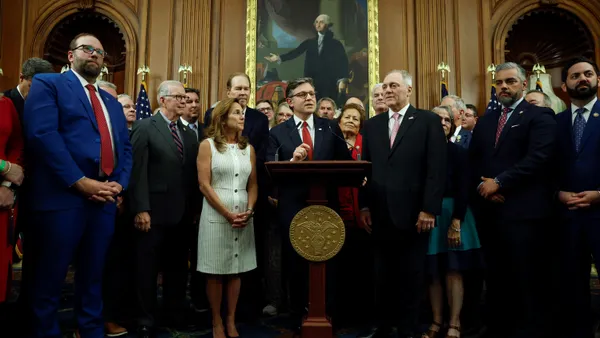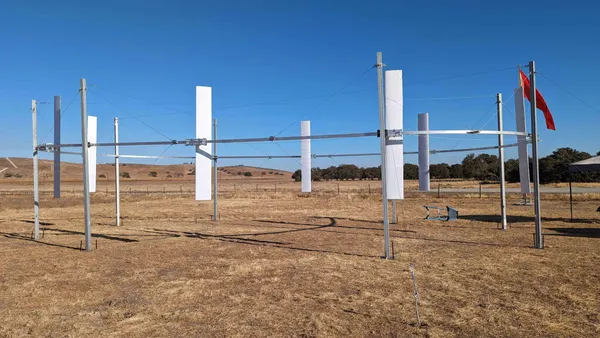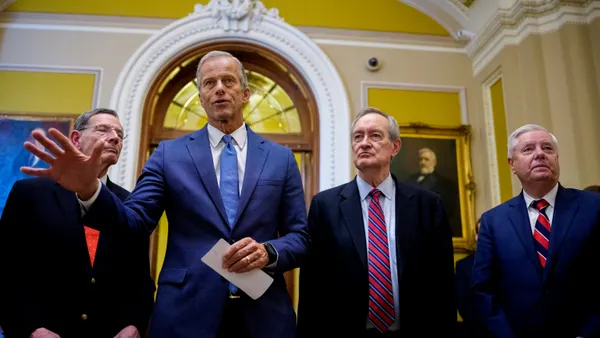Dive Brief:
-
The Connecticut Department of Energy and Environmental Protection is preparing to issue a request for proposals for solar generation in the first step of an updated procurement plan that aims to meet the state’s goal of having carbon-free electricity by 2040.
-
Filling unmet portions of previous requests for proposals with solar and developing transmission for offshore wind while adding energy storage and anaerobic digesters are the focus of DEEP’s procurement update, Katie Dykes, DEEP commissioner, said in an Oct. 7 interview.
-
DEEP plans to issue annual clean energy procurement updates to help give renewable energy developers predictability around Connecticut’s clean energy pathway, according to Dykes. “We want to provide as much forward visibility as possible,” Dykes said while discussing DEEP’s procurement plan update for 2022, issued in late August.
Dive Insight:
The upcoming solar RFP will make up for projects that won bids in previous solicitations but were canceled. At least 170 MW of approved projects were canceled for various reasons, according to the procurement update, and an additional 10 projects may also be canceled, it states.
“DEEP will exercise its existing procurement authority to receive and evaluate for potential selection projects that could replace these lost resources,” the department said in the update.
Replacement projects may be less expensive than the earlier projects because of the passage of the Inflation Reduction Act, which included expanded and extended tax credits for solar and other emissions-free resources, Dykes said.
Also, Connecticut and other New England states may be able to take advantage of funding for transmission projects provided in the Infrastructure Investment and Jobs Act, according to Dykes.
Five New England states last month issued a request for information to help inform the development of transmission for renewable energy, including offshore wind. Dykes said she expects the initiative will spur strategic planning for transmission, leading to reduced congestion on the grid and an optimal system for handling electricity from offshore wind farms.
With new tax credits for standalone storage in the IRA, DEEP intends to issue an RFP to jump-start the state’s goal of adding 1,000 MW of energy storage by 2030, according to the procurement plan update.
“DEEP will analyze Connecticut’s electric system through modeling to find the best use cases, appropriate incentive and contract structures, and potentially identify the best locations for grid-scale energy storage systems,” the department said in the update.
Use cases could include displacing gas-fired peaking units, supporting variable energy resources and interconnecting large loads related to electrifying the transportation and buildings sectors, DEEP said.
The department will also push for market reforms at ISO New England so that storage projects are properly valued and compensated, according to the update.
Dykes called for addressing environmental considerations early when planning and siting energy infrastructure such as transmission lines for offshore wind farms.
“It’s a critical opportunity to minimize and avoid incompatibility,” Dykes said.
DEEP is holding a meeting on the procurement plan update, including the upcoming solar RFP, on Oct. 19.
Connecticut’s efforts to move away from fossil-fuel generation, including a 10-year contract that helped keep Dominion Energy’s Millstone nuclear plant operating, is paying dividends for the state’s ratepayers, according to Dykes.
“The investments made to date are helping ratepayers survive the roller coaster of fossil fuel prices,” Dykes said.
Current all-in electricity costs in Connecticut are “meaningfully lower” than they are in neighboring states that have been more affected by the jump this year in natural gas prices, Dykes said, noting that the contract with Dominion has produced about $150 million in revenue for the state’s ratepayers.
New England as a whole could see wholesale electricity prices in the $100/MWh range this winter, about double the prices from last winter, the Energy Information Administration said last month.














